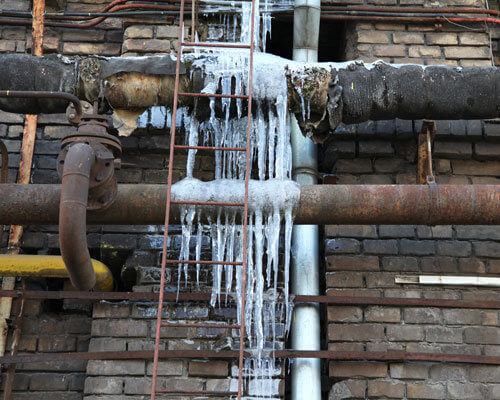Ways to Maintain Pipes from Freezing Damage: Important Tips
Ways to Maintain Pipes from Freezing Damage: Important Tips
Blog Article
Just how do you actually feel when it comes to How to prepare your home plumbing for winter weather?

Cold weather can wreak havoc on your pipes, specifically by freezing pipelines. Below's exactly how to avoid it from occurring and what to do if it does.
Intro
As temperatures drop, the risk of icy pipelines increases, potentially bring about pricey repair services and water damage. Recognizing exactly how to prevent icy pipes is critical for home owners in cold environments.
Prevention Tips
Shielding susceptible pipelines
Wrap pipelines in insulation sleeves or use warm tape to shield them from freezing temperatures. Concentrate on pipes in unheated or outside locations of the home.
Heating methods
Maintain indoor spaces effectively heated, especially areas with pipes. Open up closet doors to allow warm air to distribute around pipes under sinks.
Exactly how to determine icy pipelines
Look for reduced water flow from taps, unusual odors or noises from pipes, and visible frost on exposed pipes.
Long-Term Solutions
Architectural adjustments
Take into consideration rerouting pipes far from outside wall surfaces or unheated locations. Add additional insulation to attic rooms, cellars, and crawl spaces.
Upgrading insulation
Invest in premium insulation for pipes, attics, and wall surfaces. Appropriate insulation helps keep constant temperatures and minimizes the danger of frozen pipelines.
Safeguarding Outdoor Pipes
Garden pipes and outdoor taps
Disconnect and drain pipes garden tubes before winter months. Install frost-proof faucets or cover exterior faucets with shielded caps.
Understanding Frozen Pipelines
What causes pipelines to freeze?
Pipes ice up when exposed to temperatures listed below 32 ° F (0 ° C) for expanded periods. As water inside the pipes freezes, it broadens, taxing the pipe walls and potentially causing them to burst.
Risks and damages
Frozen pipes can result in supply of water interruptions, building damages, and pricey repair services. Ruptured pipelines can flooding homes and trigger comprehensive structural damages.
Indicators of Frozen Water Lines
Determining frozen pipes early can avoid them from breaking.
What to Do If Your Pipelines Freeze
Immediate actions to take
If you presume icy pipes, maintain faucets open up to soothe pressure as the ice thaws. Use a hairdryer or towels soaked in hot water to thaw pipelines slowly.
Verdict
Protecting against frozen pipelines requires aggressive steps and fast responses. By recognizing the causes, indications, and safety nets, property owners can shield their plumbing during winter.
5 Ways to Prevent Frozen Pipes
Drain Outdoor Faucets and Disconnect Hoses
First, close the shut-off valve that controls the flow of water in the pipe to your outdoor faucet. Then, head outside to disconnect and drain your hose and open the outdoor faucet to allow the water to completely drain out of the line. Turn off the faucet when done. Finally, head back to the shut-off valve and drain the remaining water inside the pipe into a bucket or container. Additionally, if you have a home irrigation system, you should consider hiring an expert to clear the system of water each year.
Insulate Pipes
One of the best and most cost-effective methods for preventing frozen water pipes is to wrap your pipes with insulation. This is especially important for areas in your home that aren’t exposed to heat, such as an attic. We suggest using foam sleeves, which can typically be found at your local hardware store.
Keep Heat Running at 65
Your pipes are located inside your walls, and the temperature there is much colder than the rest of the house. To prevent your pipes from freezing, The Insurance Information Institute suggests that you keep your home heated to at least 65 degrees, even when traveling. You may want to invest in smart devices that can keep an eye on the temperature in your home while you’re away.
Leave Water Dripping
Moving water — even a small trickle — can prevent ice from forming inside your pipes. When freezing temps are imminent, start a drip of water from all faucets that serve exposed pipes. Leaving a few faucets running will also help relieve pressure inside the pipes and help prevent a rupture if the water inside freezes.
Open Cupboard Doors
Warm your kitchen and bathroom pipes by opening cupboards and vanities. You should also leave your interior doors ajar to help warm air circulate evenly throughout your home.

I'm just very enthusiastic about Prevent Frozen Pipes and I am assuming you liked our blog entry. Enjoyed reading our entry? Please quickly share it. Help another person check it out. I cherish reading our article about Helpful Tips to Prevent Frozen Pipes this Winter.
Call Today Report this page